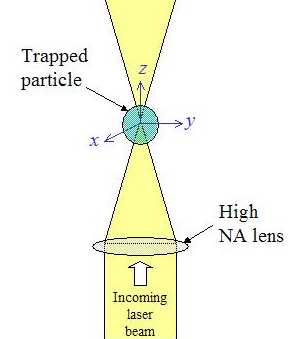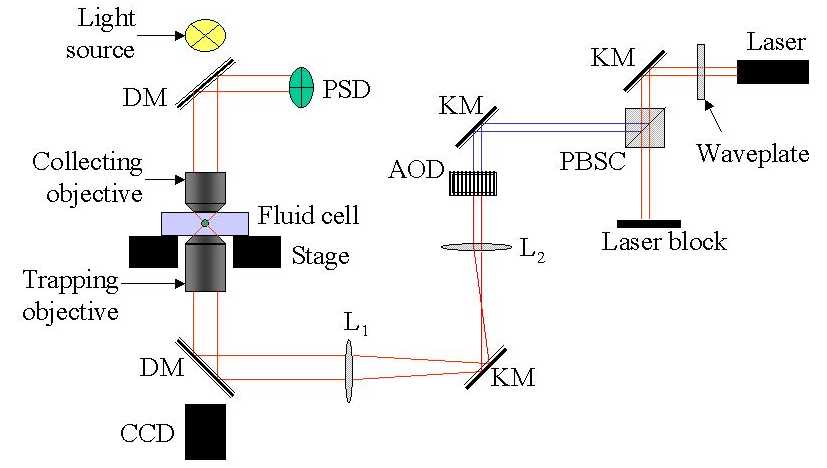

The optical tweezer is a device that uses a focused laser beam to trap and manipulate
individual dielectric particles in an aqueous medium. A typical tweezer can manipulated
dielectric particles with a diameter on the order of microns. The trapping force is
relatively small, on the order of picoNewtons (pN). However, this is sufficient for
most biological and biomolecular investigations.
For example, a force of 10 pN is sufficient to pull a bacterium such
as Escherichia coli through water at ten times the speed at which it can swim.
The most widespread use of optical tweezers is for measuring interactions between bio-active molecules such as measuring forces exerted by "molecular motors". Our research is aimed at pushing the limits of performance of the tweezer as a sensor and actuator. As an example, by the use of recursive identification techniques, we have been able to speed up the identification of molecular spring constants by an order of magniute over standard offline techniques. This is in the presence of a substantial amount of thermal noise, which is the limiting factor for identification at this scale. The ultimate goal of such an approach is to increase identification speed so that one can observe the "signatures" of certain biomolecular interactions in real time.
|
tweezer stage |
tweezer set up |
optical trap principle
|
tweezer schematic
|
This is mostly the work of
Aruna Ranaweera,
who built and experimented with the tweezer instrument at UCSB shown in the pictures above.
Many of the details of the tweezer project can be found in the paper
"Modeling, Identification, and Control of a Spherical Particle Trapped in an Optical Tweezer"
on the publications page.
[BACK TO Pictures PAGE]